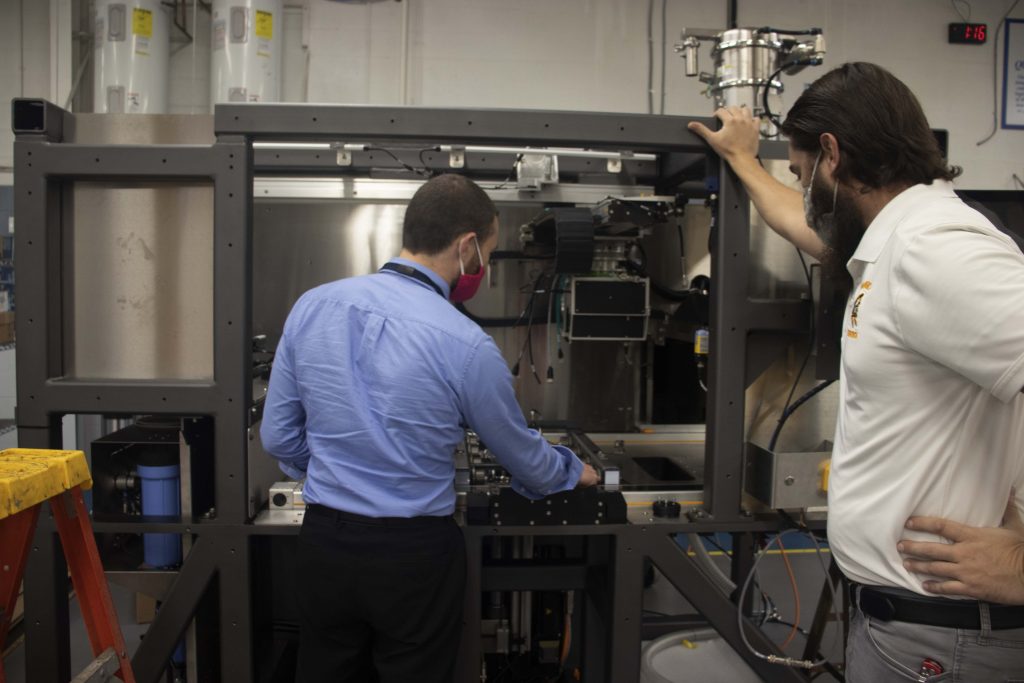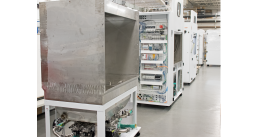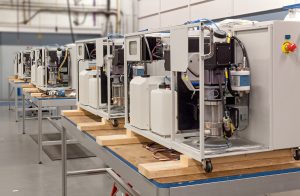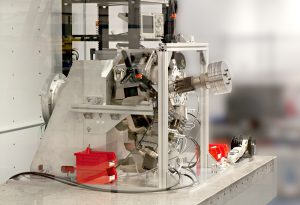Design for Manufacturability (DFM)
At some point during your new product introduction process, you’re going to start thinking about the design for manufacturing and assembly, commonly referred to as DFMA. The fact is ambitious companies that plan to bring a new product to the market are forced to cobble together prototypes and alpha builds to bring their products to life. This can become difficult when the product you’re trying to piece together is machinery or equipment.
During the first steps of creating the design and build process, it’s hard to think about long-term production volumes in the future since you’re just trying to get your product to function. However, looming in the background is the real goal: Launching production so your company hits the annual forecast for dozens, hundreds, or thousands of shipments per year. If that’s the case, it’s time to start the DFMA process before you’re too far in the prototype phase. This blog outlines how DFMA functions and helps establish a foundation for production down the road.
At PEKO, our engineers consistently work on several different aspects of DFM and DFA for a variety of customers to optimize designs, reduce overall costs, improve efficiencies, and ensure the long-term success of each program. This is all an effort to improve design for manufacturing and assembly, or DFMA for short. At PEKO, we categorize design for manufacturing and assembly efforts under the “value engineering” umbrella. Because of this, our team is very familiar with the consulting efforts that our customers rely on us for.
Whenever we engage in these value engineering projects, we analyze the design with a fresh perspective. With an “all-hands-on-deck” approach, we involve other PEKO personnel who are directly involved in the program to offer their insight and additional feedback. They include assembly technicians, toolmakers, quality engineers, and other mechanical engineers who are not familiar with the program’s design or equipment. Additionally, members from the product’s company must be involved in this process as well to collaborate alongside PEKO to assess the feasibility of the recommendations and conceptual updates.

Each time we perform a value engineering brainstorm session for DFM and DFA, we use 3 key principles to analyze each component’s existence. Reviewing these three principles successfully implements as many aspects as possible from our value engineering sessions. Each component must justify its design to ensure it accomplishes the functional requirement necessary for performance, without succumbing to tendencies of over designing.
These 3 key principles are as follows:
- Eliminate. What is the function of the component? Can the component be removed? Is the component critical?
- Combine. Can we integrate certain parts in the design with other parts?
- Optimize. Can a given part be simplified? Can a different, more cost-effective component replace this specific item? Can a different manufacturing technique be implemented to save time or reduce costs?
In addition to these three key principles, there are additional aspects of the design that require key focus during the DFM and DFA process. These focuses include:
- Reduce hardware counts (screw or nut, not both)
- Replace manufacturing processes
- i.e. Can machine components be transitioned to sheet metal operations? Often, this process replacement is possible for the manufacturing of frames and structural features.
- Review volume cases to determine if a transition to casting/molding is feasible
- Focusing datums or critical to function (CTF) design features into 1 component
- i.e. Make one part the datum master and put all the tight tolerances into a single component.
- Implement self-locating or fixturing components for ease of assembly
Design for Assembly (DFA)
The vast majority of products optimized in PEKO’s NPI and Engineering teams end up living within our manufacturing facilities for the entirety of their life cycle. Due to the long-term partnerships established between us and our customers, this working relationship allows us to increase or decrease product quantitates based on the market’s current needs. The results of our value engineering efforts directly impact in-house production and assembly teams. Therefore, we have a direct, and intimate, understanding of the long-term effects that could result if DFA is not taken into account.
With our long history in the manufacturing industry, PEKO leverages those many years of experience to improve a program’s assembly process. With each new assembly program, we easily identify key aspects during the very early stages for DFMA opportunities. Even while we are involved in the prototype builds of units, we closely observe assembly features that can further improve efficiency. Serving as the long-term contract manufacturer for the majority of programs designed by PEKO, we live with the results of each value engineering effort.

Key aspects we take into consideration when it comes to assembly impacts include:
- Utilize Pem Nuts, Rivnuts, Weld studs, etc.
- Eliminates the need for both screw and nut and reduces overall hardware count.
- Implement tabs and pin features
- Reduces hardware, while still providing a positive install feature.
- Standardize hardware across the entire machine or sub-assembly
- Ensure proper clearance and access points are stated
- Considers the amount of room required for tooling to reach hardware and mounting features.
- Design poka-yoke features into components
- Eliminates the risk of mounting incorrectly.
- Develop the sub-assemblies and print packages to properly support the build sequence
- Integrate quality into the assembly line
- Similar to automotive assembly line features, this allows for testing on each sub-assembly before the final top-level assembly check.
- Develop accurate and detailed Work Instruction documents
- Captures key requirements or specific methods for assembly completion.
- Design fixtures, tools, and templates
- Supports repeatability efforts as efficiently as possible.
Whether you plan to bring a new product to market this year or next, make time to review these common DFM and DFA techniques. While it may seem like an engineering dissertation, it will save you money in the long run and help pave the roadmap for your product’s successful launch and lifecycle.








